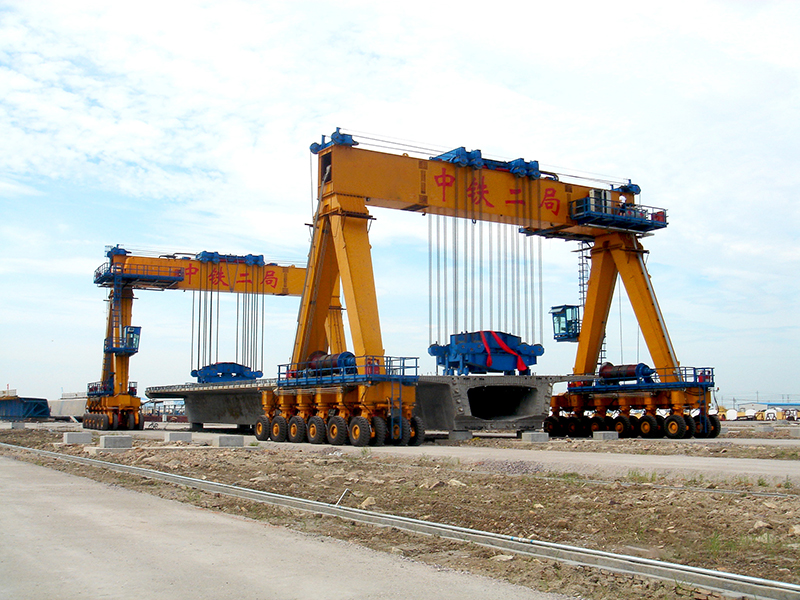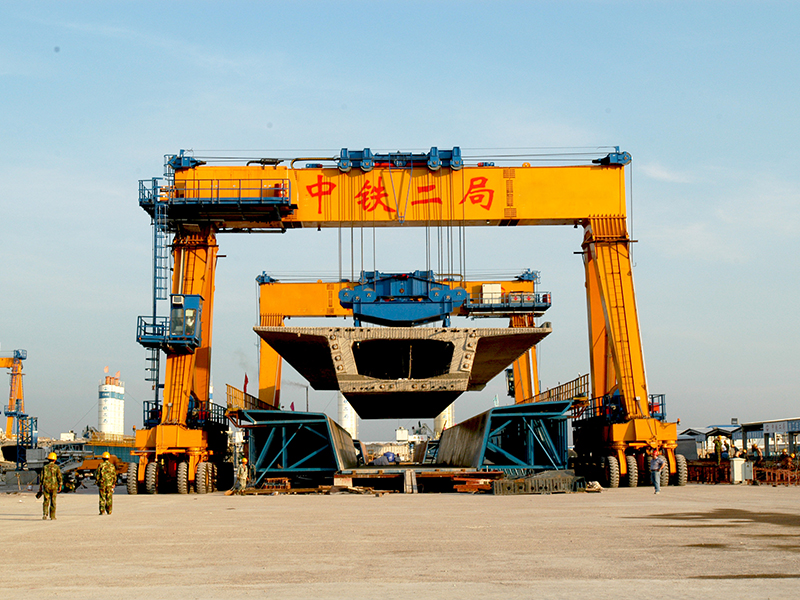In the realm of modern bridge construction, the utilization of precast concrete components has become a prevalent practice, offering efficiency, durability, and cost-effectiveness. Among the various methods employed for handling these components, rubber-tyred gantry cranes (RTGs) have emerged as a versatile and reliable solution. This article explores the key considerations associated with lifting and placing precast concrete components using RTGs, shedding light on the nuances that contribute to successful bridge construction projects.

Load Capacity and Dimensional Compatibility:
One of the primary considerations when employing RTGs in the lifting and placing of precast concrete components is ensuring that the load capacity of the bridge construction crane aligns with the weight of the components. Additionally, the dimensions of the components must be compatible with the crane’s lifting capabilities. This meticulous matching process guarantees the safe and efficient transport of precast elements from the storage area to their designated positions in the bridge structure.
Versatility of Rubber Tyred Gantry Cranes:
RTGs are known for their mobility and adaptability. Their rubber tires enable them to traverse various terrains, making them suitable for navigating construction sites with diverse topographies. This versatility is crucial in bridge construction projects where the terrain may vary, and the crane needs to access different areas for lifting and placing precast components.
Site-specific Considerations:
Each bridge construction site presents unique challenges and considerations. Factors such as ground conditions, environmental constraints, and spatial limitations must be thoroughly assessed to determine the most effective use of RTGs. Site-specific evaluations contribute to the development of a tailored lifting plan that maximizes the efficiency and safety of precast concrete component installation.
Lifting Configuration and Rigging Techniques:
Proper lifting configuration and rigging techniques are paramount in ensuring the stability and safety of precast concrete components during transport. The crane operator must carefully choose the appropriate lifting points on each component and employ rigging methods that distribute the load evenly. This meticulous approach minimizes the risk of structural damage to the precast elements and ensures a secure lift.

Communication and Coordination:
Effective communication and coordination among the construction team members are critical during the lifting and placing of precast components. The operator of the straddle carrier, ground crew, and project managers must maintain clear and constant communication to synchronize movements and ensure the precise positioning of each component. This collaborative effort is essential for preventing accidents and streamlining the construction process.
Safety Protocols and Regulations:
Adherence to safety protocols and compliance with industry regulations are non-negotiable aspects of any construction project. When using RTGs for lifting precast concrete components, strict adherence to safety guidelines is imperative. Regular equipment inspections, operator training, and compliance with local and international safety standards contribute to a secure working environment and the prevention of accidents.
Weather Considerations:
Weather conditions can significantly impact the lifting and placing of precast concrete components. High winds, rain, or extreme temperatures may pose challenges to the safe operation of RTGs. Construction teams must monitor weather forecasts closely and implement precautionary measures when adverse conditions are anticipated. Temporary halts in operations during inclement weather can prevent accidents and ensure the integrity of the precast components.
Quality Control and Inspection:
Prior to lifting and placing precast concrete components, a rigorous quality control and inspection process should be implemented. This includes examining each component for manufacturing defects, ensuring proper curing, and confirming the compatibility of components with the design specifications. Thorough quality checks contribute to the longevity and structural integrity of the bridge.
Conclusion:
The lifting and placing of precast concrete components with rubber tyred gantry cranes in bridge construction demand meticulous planning, coordination, and adherence to safety standards. By carefully considering load capacities, site-specific conditions, lifting configurations, and other critical factors, construction teams can optimize the efficiency and safety of the entire process. With the increasing adoption of precast concrete in bridge construction, the thoughtful integration of RTGs proves instrumental in achieving successful and enduring infrastructure projects.
